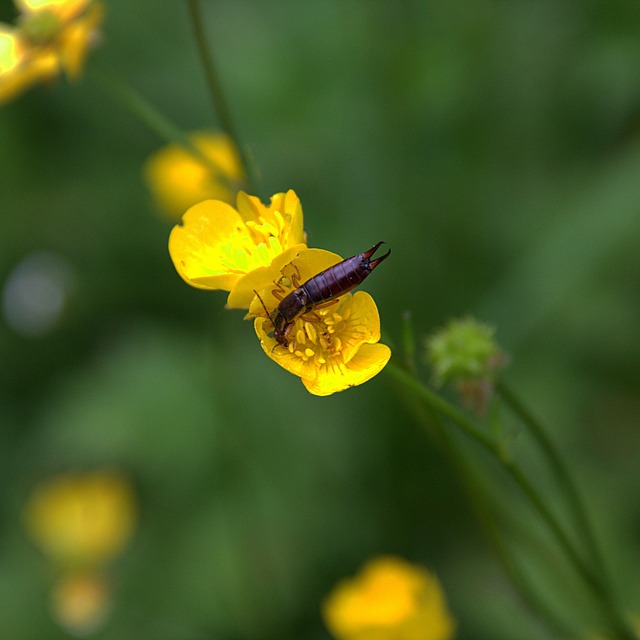Earwigs infiltrate homes through plants or cracks, breeding in dark, moist areas like basements and kitchens. Regular inspections and customized earwig control plans from professionals are crucial for prevention. These plans involve sealing entry points, maintaining hygiene, reducing moisture, and targeted insecticide use to disrupt their life cycle. Implementing this multi-faceted strategy ensures a comfortable living environment free of earwig infestations.
Earwigs, despite their creepy reputation, are a common household pest. This article provides practical tips on preventing and managing earwig infestations in your home. We’ll start by demystifying these insects, exploring their behavior and habitat preferences. We’ll then offer strategies for early detection through sign identification, followed by tailored customized earwig control plans for effective, long-term prevention.
Understanding Earwigs: Behavior and Habitat
Earwigs are small, nocturnal insects known for their peculiar appearance and secretive behavior. Understanding their habits is crucial in developing effective prevention strategies. These creatures prefer dark, moist environments, often hiding in cracks, crevices, and areas with high organic matter content. They are particularly drawn to plants, so gardens and outdoor spaces can serve as potential entry points into homes. Earwigs are active during the night, venturing out to forage for food—mostly plant materials, but they also consume other insects and even small spiders.
Their preferred habitats within a home include areas like basements, bathrooms, kitchens, and places where plants are grown indoors. Customized earwig control plans should focus on sealing entry points, maintaining excellent hygiene, and reducing moisture levels in affected areas. Regular inspections can help identify potential breeding sites, allowing for prompt action to disrupt their life cycle and prevent infestations from escalating.
Identifying Signs of Infestation Early
Earwigs are tiny yet tenacious creatures that can quickly turn into a significant home infestation if left unchecked. One of the best ways to mitigate this problem is by identifying signs of an earwig presence early on. Regular inspections and prompt action can prevent these pests from establishing themselves in your living space. Look for telltale signs such as small holes chewed through packaging materials, cardboard, or fabric; shed skin fragments; or even the insects themselves, which resemble tiny ants with flattened bodies and long antennae.
Timely identification allows for the implementation of customized earwig control plans. Professional pest control services offer tailored solutions, ensuring that every corner of your home is assessed and treated effectively. By acting swiftly, you can save yourself from a major infestation and maintain a comfortable living environment.
Customized Earwig Control Plans for Your Home
Customized earwig control plans are essential for effectively managing and preventing infestations in your home. Unlike one-size-fits-all solutions, these tailored strategies consider the unique characteristics of your property, including its layout, climate, and potential entry points. By assessing these factors, pest control experts can implement targeted measures such as sealing gaps and cracks, using specific insecticides, and introducing beneficial insects to disrupt earwig breeding cycles.
This personalized approach ensures that every nook and cranny is addressed, making it a powerful tool against persistent earwig problems. Customized plans also offer long-term benefits by providing ongoing monitoring and adjustments, ensuring your home remains free from these pesky invaders for years to come.
Preventive Measures to Keep Earworms at Bay Long-term
To prevent earwig infestations long-term, it’s crucial to implement a customized earwig control plan tailored to your home’s unique needs. This involves a multi-pronged approach that combines environmental adjustments, sealing entry points, and regular inspections. First, identify potential habitats where earwigs thrive, such as dark, damp corners or areas with organic debris, and take steps to minimize these conditions. Regularly vacuum high-risk areas, dispose of garbage promptly, and ensure proper ventilation in crawl spaces and attics.
Second, seal any visible cracks, crevices, or openings around windows, doors, and utility pipes using caulk or weatherstripping. This physical barrier disrupts earwigs’ access points into your home. For more targeted control, consider using trap systems that lure and capture earwigs, especially near entry points or where infestations have occurred. Additionally, professional pest control services can provide customized earwig control plans, employing safe, effective treatments as needed to keep your home free from these persistent intruders.
Earwigs can be a persistent pest, but with the right strategies, you can effectively prevent and manage infestations. By understanding their behavior and early signs of an infestation, you can take proactive measures using customized earwig control plans tailored to your home’s unique needs. Implementing long-term preventive methods ensures a quieter, pest-free living environment. Remember, quick action is key when addressing earwigs, so stay vigilant and don’t hesitate to seek professional help for severe cases.
